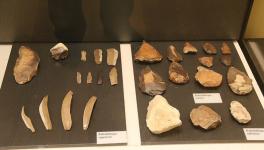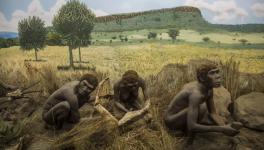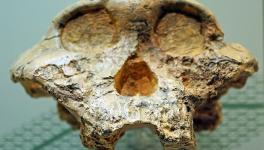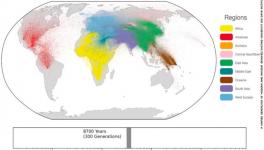‘Ghost Population’ of Archaic Humans Found in Modern Day Genes of People in West Africa
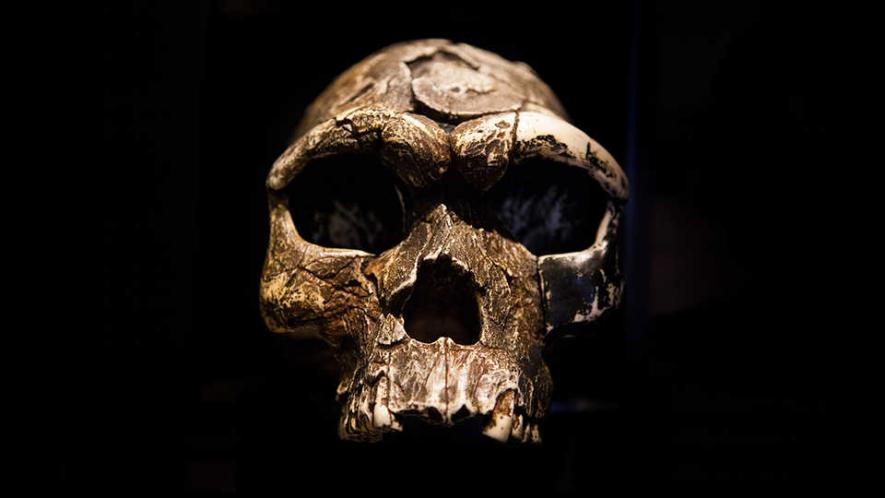
Image Courtesy: Calacademy.org
The topic of human evolution has been yielding exciting discoveries with every new kind of fossil found or new population genetics research. The latest in this was put forth by a report, published in Science Advances, that scientists have discovered the presence of genes of an unknown archaic human species in modern West African Humans. This archaic human species still remains unknown, but their genes are still present among modern humans. This population has become popularly known as the ‘Ghost Population’ of archaic humans.
The earlier archaic humans that we have knowledge about, and those with whom the modern humans interbred include the Neanderthals and the Denisovans. But the latest report opens up a grand new finding that can lead to years of research in the future, as the species hinted towards by the new research is completely unknown. What can be gathered is that the presence of the gene of this ghost species could make their way into modern human’s genome as a result of interbreeding between the two species.
Arun Duravasula and Sriram Sankararaman, two geneticists from the University of California, Los Angeles, conducted the study. For their study, the scientists carried out a large scale comparison of the genomic variety in modern humans, Neanderthals and Denisovans. They tracked the pathway of new genes arising in each branch of humans. For most part of their analysis, the data fit the information currently available about human evolution. But when it came to a few populations in West Africa, like the Yoruba of Nigeria and the Mende of Sierra Leone, some of their DNA contained variants that are not found in other living human populations. Interestingly, this part of the DNA also doesn’t match with that of Neanderthal or Denisovans. This means, some percentage of the DNA in the present day West Africans seemed to have arisen in a distant branch of humans that was not Homo Sapiens.
Also read: Modern Humans Interbred With Two More Archaic Humans
The model developed in the study further suggests that this unknown archaic human population split millions of years ago from the lineage that gave rise to modern humans, Neanderthals and Denisovans.
Sriram Sankararaman, one of the researchers, is quoted to have said, “They seem to have made a pretty substantial impact on the genomes of the present day individuals we studied. They account for 2% to 19% of their genetic ancestry.”
The study took four populations—two from Nigeria, one each from Sierre Leone and Gambia.
Although a new paradigm has been opened up by the study, the findings are not definitive. But according to the best estimates that the scientists could have done, the ghost population split from ancestors of Neanderthals and modern humans somewhere between 3,60,000 to 1 million years ago. The estimates also say that a population of about 20,000 individuals bred with ancestors of modern West Africans some 1,24,000 years back.
“There may have been multiple waves of mating over many thousands of years. Or a number of different populations of so-far-unknown archaic human relatives. It’s very likely that the true picture is much more complicated,” said Sankararaman.
Commenting on the new findings, John Hawks, an anthropologist at the University of Wisconsin-Madison, who was not involved in the study, said, “It is always interesting and useful to see researchers applying new methods to try to get a better idea of what ancient populations might have been like. It’s an exciting moment because these studies open a window showing us that there is much more than we thought to learn about our ancestors. But actually knowing who those ancestors were, how they interacted, and where they existed is going to take fieldwork to find their fossil and archaeological remains. We do not know what this African population may have been. It is tempting to speculate. But I’ve got to say it is just too soon to know. We haven’t discovered enough fossils in most of Africa to say we know what was there.”
Also read: Neanderthal DNA in Africans Suggest Back-migration to Africa from Present-day Europe
Get the latest reports & analysis with people's perspective on Protests, movements & deep analytical videos, discussions of the current affairs in your Telegram app. Subscribe to NewsClick's Telegram channel & get Real-Time updates on stories, as they get published on our website.











